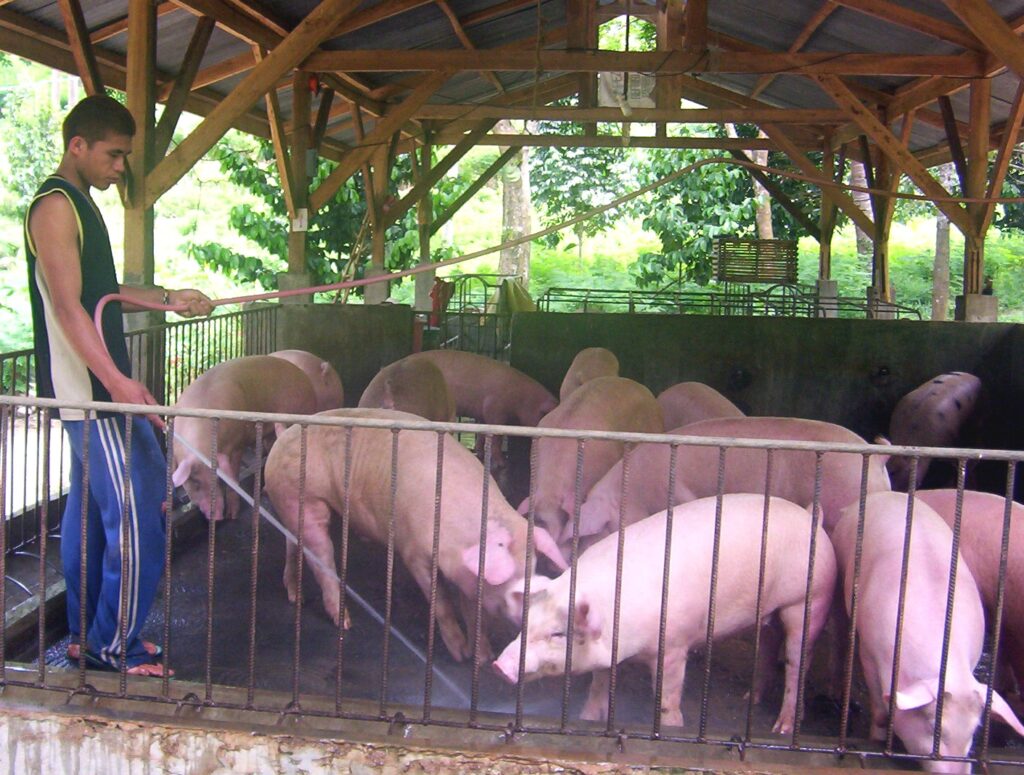Text and Photos by Henrylito D. Tacio
“Climate change is very simple,” explained Dr. Robert Watson, a British chemist who has worked on atmospheric science issues. “We are increasing emissions of greenhouse gases and thus their concentrations in the atmosphere are going up. As these concentrations increase, the temperature of the earth rises.”
Examples of greenhouse gases are water vapor, carbon dioxide, methane, and nitrous oxide. There are also those man-made gases generated during industrial processes like sulfur hexafluoride, hydrofluorocarbons, and perfluorocarbons.
“Our lifestyle has led to the accumulation of greenhouse gases in the atmosphere,” notes the fact sheet circulated during a workshop on climate change held in Davao City some years back. “These gases trap heat from the sun, making the earth warmer. Manifestations of a warmer world include rising mean temperatures, sea level rise and increase in the frequency and intensity of extreme weather events like droughts and greater rainfall.”
“Continued emission of greenhouse gases will cause further warming and long-lasting changes in all components of the climate system, increasing the likelihood of severe, pervasive and irreversible impacts for people and ecosystems,” contends a report from the Intergovernmental Panel on Climate Change.
Dr. Rosa T. Perez, a research fellow of the Manila Observatory, says that the current carbon dioxide released into the atmosphere is about 40% more than pre-industrial levels. “We are emitting a lot of carbon dioxide faster than the Earth can absorb any excess,” she deplores.
In 2009, the government passed the Climate Change Act, which enacted a set of climate-specific laws complemented by the creation of climate-specific institutions. These institutions aim to integrate and coordinate climate change at all levels of government – national, regional, and local – to improve financing, prioritization, and planning.
“Think globally, act locally,” so goes a slogan. The world is doing something to stop the consequences of climate change. While the international community is trying to cut carbon dioxide emissions, there are some things that an individual can do. In the journal Environmental Research Letters, there are four actions that can make a difference.
“This may not be surprising, however, as they tend to be things people are involved with in their everyday lives: living without a car, avoiding air travel, avoid eating meat, and – most “controversially” – have less children,” wrote Robin Andrews in www.iflscience.com.
Let’s take a closer look at each:
Living without a car: A typical passenger vehicle emits about 4.7 metric tons of carbon dioxide per year, according to the US Environment Protection Agency (EPA). This is assuming that the average gasoline vehicle on the road has a fuel economy of about 21.6 miles per gallon and drives around 11,4000 miles per year. “Every gallon of gasoline burned creates about 8,887 grams of carbon dioxide,” it claims.
In addition to carbon dioxide, automobiles also emit other greenhouse gases like methane and nitrous oxide from the tailpipe and hydrofluorocarbon emissions from leaking air conditioners.

“The emissions of these gases are small in comparison to carbon dioxide; however, the impact of these emissions can be important because they have a higher global warming potential than carbon dioxide,” EPA says.
Avoiding air travel: “We hear much about the environmental costs of air travel,” wrote Duncan Clark in a feature which was published by The Guardian. “The problem is not just that planes burn a lot of fuel and therefore kick out plenty of carbon dioxide per passenger. Just as important are a host of other high-altitude impacts, including vapor trails and ozone production, that are usually estimated to cause as much warming as the carbon dioxide itself.”
Since 1990, carbon dioxide emissions from international aviation have increased 83%. “The aviation industry is expanding rapidly in part due to regulatory and taxing policies that do not reflect the true environmental costs of flying,” notes the David Suzuki Foundation on its website. “‘Cheap’ fares may turn out to be costly in terms of climate change.”
Compared to other modes of transport – like driving a car or taking the train – traveling by air has a greater climate impact per passenger kilometer, even over longer distances. “It’s also the mode of freight transport that produces the most emissions,” the foundation states.

It’s not only carbon dioxide that planes emit. “When jet fuel is burned, the carbon in the fuel is released and bonds with oxygen in the air to form carbon dioxide,” the foundation explains. “Burning jet fuel also releases water vapor, nitrous oxides, sulphate and soot.”
But what makes aircraft emissions striking is that most of them “are produced at cruising altitudes high in the atmosphere.” The foundation says: “Scientific studies have shown that these high-altitude emissions have a more harmful climate impact because they trigger a series of chemical reactions and atmospheric effects that have a net warming effect.”
The Intergovernmental Panel on Climate Change (IPCC), a United Nations body that became a co-recipient of the 2007 Nobel Peace Prize, said that the climate impact of aircraft is two to four times greater than the effect of their carbon dioxide emissions alone.
Avoiding eating meat: “While energy generation, transport and buildings have long been a target for governments, businesses and campaigners looking into reducing emissions, the impact from food production has often been left out,” wrote The Guardian‘s Fiona Harvey. “But on current trends, with intensive agriculture increasingly geared towards livestock rearing, food production will be a major concern.”
According to Harvey, intensive livestock-rearing is a significant cause of greenhouse gases, “in part because of the methane produced by the animals and the massive slurry pits that accompany large farms.” Not only that, but livestock raising also diverts water and grains to grow animals, “which is less efficient than directing the grains towards direct human consumption.”

Less meat consumption 
Research done by scientists at the Oxford Martin School found out that by shifting to eating vegetables or merely cutting down meat consumption “within accepted health guidelines,” would make a large dent in greenhouse gases.
“Adhering to health guidelines on meat consumption could cut global food-related emissions by nearly a third by 2050, the study found, while widespread adoption of a vegetarian diet would bring down emissions by 63%,” Harvey wrote.
Another study, published in Nature Communications, analyzed about 500 food consumption and production without cutting down more forests. “The biggest contributing factor to food-related deforestation is eating meat,” the study says.
Have fewer children: There’s no doubt about it: population growth is a significant contributor to climate change, “given that humans use fossil fuels to power their increasingly mechanized lifestyles.”
“More people means more demand for oil, gas, coal and other fuels mined or drilled from below the Earth’s surface that, when burned, spew enough carbon dioxide into the atmosphere to trap warm air inside like a greenhouse,” the Scientific American says.
“Having less children means that the next generation would require (and demand) fewer resources,” Andrews wrote. “The planet is already struggling to meet our needs and desires as it is.”

He added that having just one less child “saves a remarkable 59 tons of carbon dioxide. This is 295 times more effective than regularly recycling, or 590 times more effective than using energy-efficient lightbulbs.”
Two years ago, Pope Francis made news when he commented that climate change is real and mostly man-made. He did also urge couples not to breed “like rabbits” but rather plan their families responsibly.
In an editorial, the Los Angeles Times noted: “By 2050, world population is expected to increase from its current level of about 7 billion to somewhere between 8 and 11 billion. According to a 2010 analysis published in the Proceedings of the National Academy of Sciences, keeping the growth to the lower number instead of even the mid-range 9.6 billion could play a significant role in keeping emissions low enough to avoid dangerous levels of climate change by 2050.”
The Washington, D.C.-based Worldwatch Institute said it right: “If we cannot stabilize the population, there is not an ecosystem on Earth that we can save.”
Currently, the population of the Philippines is 103.8 million, based on the latest United Nations estimates. The country ranks number 13 in the list of countries by population and home to 1.38% of the total world population.
The authors of the four actions of climate change mitigation said what they suggested is feasible. “We recognize these are deeply personal choices,” wrote co-author Kimberly Nicholas, a senior lecturer in sustainability at Lund University. “But we can’t ignore the climate change affect our lifestyle actually has.”

